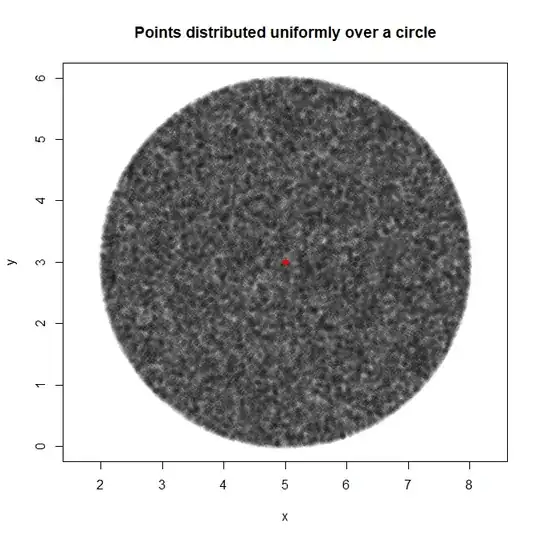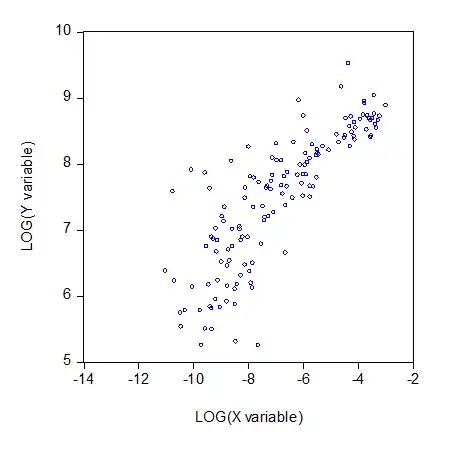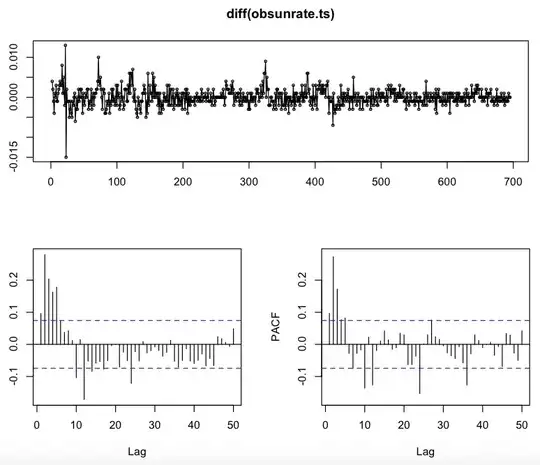The simplest and least error-prone approach - for low dimensions (see below!) - would still be rejection sampling: pick uniformly distributed points from the $m$-dimensional hypercube circumscribing the sphere, then reject all that fall outside the ball.
runifball <- function(n, centre = 0, center = centre, radius = 1) {
#Check inputs
if (!missing(centre) && !missing(center)) {
if (sum((centre - center)^2) < 1e-15) {
warning("specify 'centre' or 'center' but not both") } else {
stop("Error: specify 'centre' or 'center' but not both") } }
if (radius < 0) { stop("Error: radius must be non-negative") }
n_to_generate <- 2^length(center)*gamma(length(center)/2+1)*n/pi^(length(center)/2) # see below
original_sample_around_origin <-
matrix(replicate(length(center),runif(n_to_generate ,-radius,radius)),nrow=n_to_generate )
index_to_keep <- rowSums(original_sample_around_origin^2)<radius^2
original_sample_around_origin[index_to_keep,]+
matrix(center,nrow=sum(index_to_keep),ncol=length(center),byrow=TRUE)
}
Here is an application for the $m=2$-dimensional disk:
#Generate points uniformly on a disk
set.seed(1)
n <- 10^5
CENTRE <- c(5, 3)
RADIUS <- 3
UNIF <- runifball(n, centre = CENTRE, radius = RADIUS)
#Plot the points
plot(UNIF,
col = rgb(0, 0, 0, 0.05), pch = 16, asp = 1,
main = 'Points distributed uniformly over a circle', xlab = 'x', ylab = 'y')
points(x = CENTRE[1], y = CENTRE[2], col = 'red', pch = 16)

Once again, we will need to originally generate more points, because we will reject some. Specifically, we expect to keep $\frac{\pi^\frac{m}{2}}{2^m\Gamma(\frac{m}{2}+1)}$, which is the ratio of the volume of the $m$-dimensional ball to the volume of the $m$-dimensional hypercube circumscribing it. So we can either start by generating $\frac{2^m\Gamma(\frac{m}{2}+1)n}{\pi^\frac{m}{2}}$ and expect to end up with $n$ points (this is the approach the code above takes), or just start generating until we have kept $n$.
In either case, the number of points we originally need to draw in the hypercube in order to (expect to) end up with a single point in the ball rises quickly with increasing dimensionality $m$:

(Note the logarithmic vertical axis!)
m <- 2:20
plot(m,2^m*gamma(m/2+1)/pi^(m/2),type="o",pch=19,log="y",
xlab="Dimension (m)")
This is just a consequence of the fact that for large $m$, most of the volume of the $m$-dimensional hypercube is in the corners, not in the center (where the ball is). So rejection sampling is likely only an option for low dimensions.


